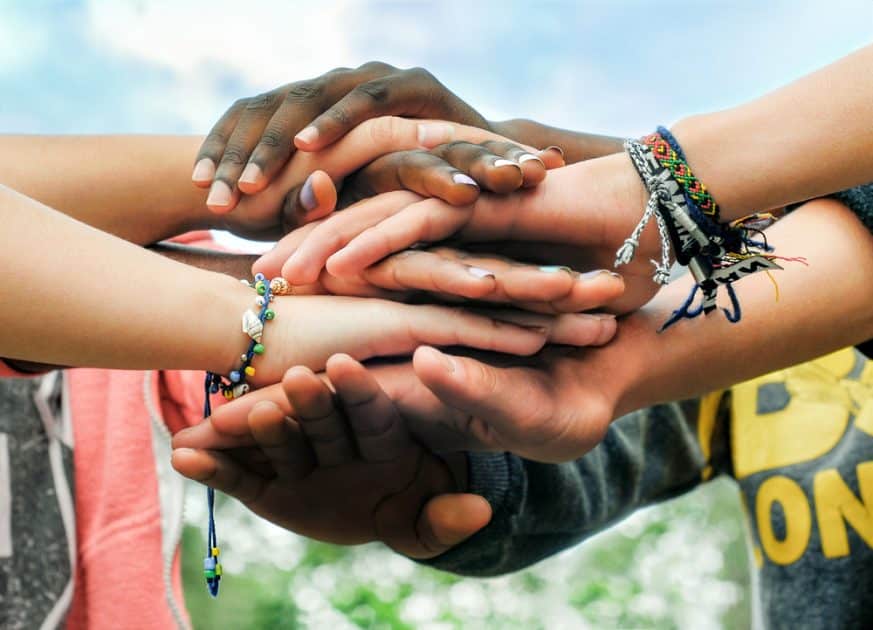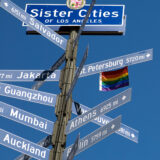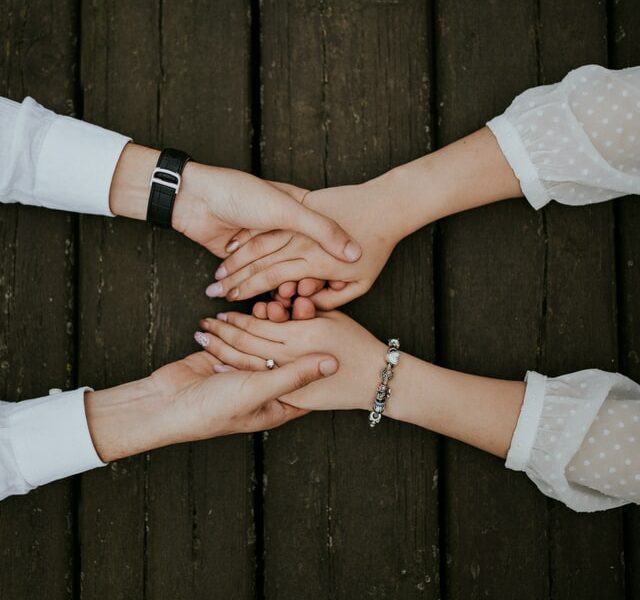In all the talk about social distancing, protecting oneself and others, self-isolation and quarantining at home, what seems to be forgotten is what makes most of us feel alive, connectedness.
Human beings do not exist in a vacuum, but in a web of social relationships embedded in our five senses. We hear, see, smell, touch, taste. Doing all this in the presence of one another makes a difference.

Connectedness:
Surely, the recent crisis has also been an exercise in the abundance of human creativity. Many of us have connected with friends and family through Zoom, Skype, and WhatsApp, we have discovered new culinary skills and fascinating self-development classes one can have online.
Some of us have even made new friends. The beginning of the lockdown seemed like an exercise in remaining connected despite the odds.
So many jokes circulated on social media reminding us where we belong and even helping us discover bonds we did not know we had with certain groups.
“Only through our connectedness to others can we really know and enhance the self. And only through working on the self can we begin to enhance our connectedness to others.” ~ Harriet Lerner
Sourdough starters were passed from door to door, so we could all bake our community bread. In our house kitchen, we discovered brewing, we got in touch with nature through making our own kombucha in seasonal flavours, elderflower, rose, strawberry and basil, watermelon.
Each month in quarantine produced a new flavour. Yet, we longed to share it with friends.
Soon enough during lockdown online dating started flourishing. There was surprise expressed about how natural it felt. How a connection was perfectly possible without meeting after all.
But what about our bodily connections? Our need for contact, touch, even for mingling in small spaces, sharing food from the same plate? What about young people some of whom had just embarked on exploring their sexuality?
Apparently, it was reported in the news, couples who did not live together could not have sex! Such scrutiny of our personal bodily boundaries is not what most of us have anticipated or ever contemplated as acceptable.
“Every problem emerges from the false belief we are separate from one another, and every answer emerges from the realisation we are not.” ~ Marianne Williamson
‘Black lives matter’ dominated the media, and yet other discriminations have also come to the fore during the pandemic.
The notion of one’s body being a miasma resonates with the LGBT communities, some members of which have experienced direct discrimination of the sort a few decades earlier during the Aids outbreak.
Gay sexuality was linked then with the risk of contamination or, even worse, the suspicion of deliberately contaminating others.
There is currently the danger that sexuality, community life, a wish to be close and to explore boundaries as well as difference and diversity are becoming once again demonised.
In our strive to be safe, the risk is that we may split between those of us who are sane, sanitised, happily insular and therefore, responsible citizens and those for whom connection is paramount for their mental health and who end up feeling that unless they ‘break the rules’ they risk suffocation or sinking into a dangerous depressive state.
The danger there is that those who desire connectedness may be classed as compromising the safety of others. Polarisation is known for cultivating social unrest and hatred.
Perhaps, the question here is how we can all recognize that connectedness is a fundamental quality of being human and that, though there is no life without risk, feeling safe in our bodily boundaries is also paramount for being in the world with one another.
The balance between the two seems particularly hard at the moment.
The Essence of Human Connectedness
Human connection is essential to our existence, going beyond social needs, and forming an invisible thread that binds us together. Through our five senses – sight, sound, smell, touch, and taste – we form emotional connections that make us feel alive and intertwined.

This web of connectedness extends even to smell and taste, capable of evoking powerful memories. Our collective existence, thus, becomes a tapestry woven with threads of shared experiences, emotions, and understandings, enhancing the uniqueness and meaning of our human experience.
Importantly, solitude is also a key aspect of this connectedness, promoting self-awareness and thereby enriching our ability to connect more deeply with others.
In essence, human connectedness is a dynamic interplay between the individual and the collective. It’s a dance of shared emotions, experiences, and understandings. Regardless of the physical distances, this dance of connection continues, defining us as humans and enriching our collective existence.
The Bottom Line
The essence of human connectedness serves as a testament to our shared human experience. We, as a species, are united by a shared thread of connectivity that is woven through our interactions, experiences, and emotions.
Despite the challenges brought about by social distancing and lockdown measures, we’ve discovered unique ways to nurture our connectivity, utilizing technology, creativity, and self-awareness to bridge the physical gaps.
Even amidst the global crisis, we have realized that the fabric of our interconnectedness is resilient, able to adapt and evolve. We’ve learned that human connection is not just about proximity, but about shared experiences, empathetic understanding, and a collective sense of belonging.
FAQs
What does it mean to be connectedness?
Connectedness means feeling a sense of belonging and being a part of something larger, be it with people, nature, or a purpose.
How do you develop connectedness?
Developing connectedness involves building relationships, fostering community participation, seeking shared experiences, and practicing empathy and understanding.
Why is connectedness important?
Connectedness promotes emotional well-being, reduces feelings of isolation, and strengthens community and social bonds, supporting overall mental health.
What is an example of connectedness?
An example of connectedness is feeling a bond with others during a community event or while volunteering together for a cause.
How does connectedness work?
Connectedness works by creating a feeling of belonging, fostering mutual support, and establishing shared values and experiences that bind individuals together.


















